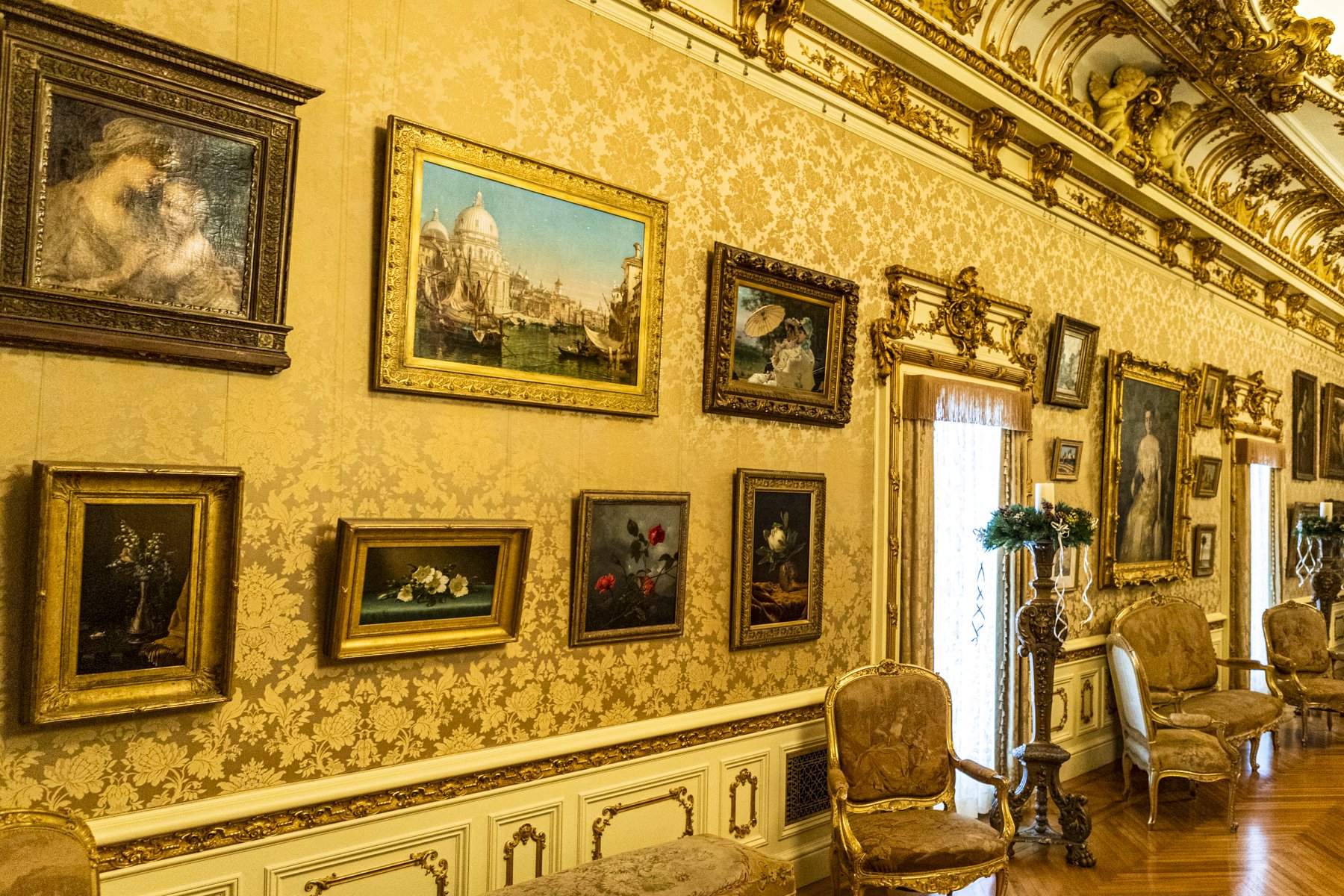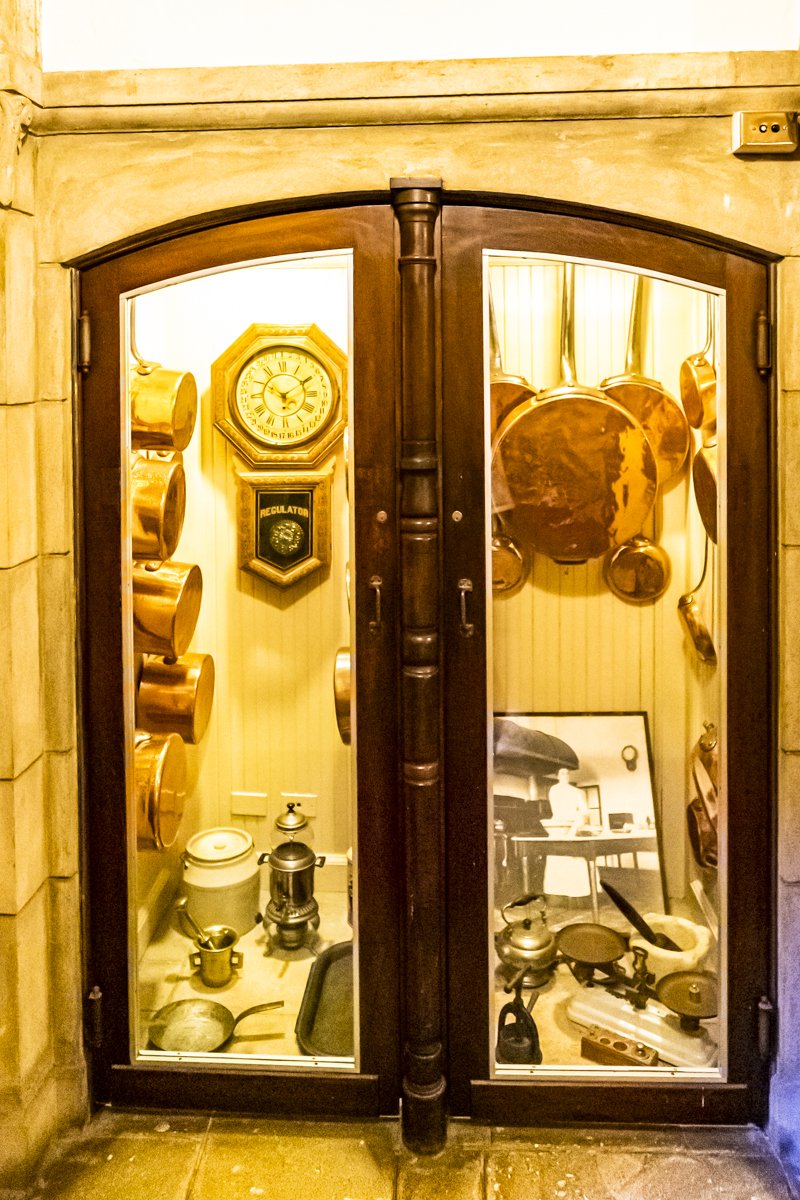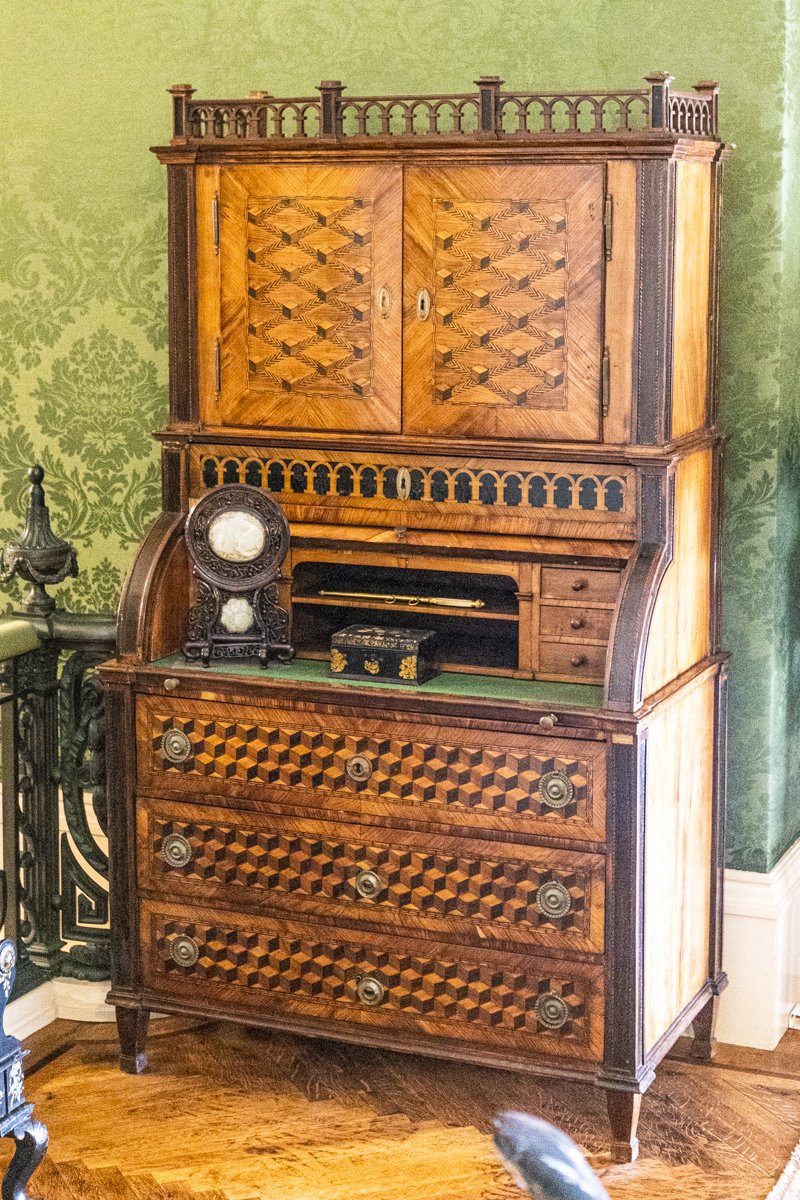
December 22, 2021
HENRY MORRISON FLAGLER MUSEUM
1 Whitehall Way, Palm Beach, FL 33480
“Whitehall is a 75-room, 100,000 square foot Gilded Age mansion open to the public in Palm Beach, Florida in the United States.” Wikipedia
On a list of things to do in West Palm Beach the Flagler Museum was listed around 12th or 13th. Had I not been to Key West and heard a little about Mr. Flagler I probably wouldn’t have even considered coming here. But I found this museum to be a real treat.
Henry Flagler, one of the founders of Standard Oil, was a key figure in the development of the Atlantic coast of Florida. He built this Palm Beach summer home in 1901-02 for his third wife (who just happened to be about half his age at the time). The house, named Whitehall, was one of the first structures to be fully electrified and had central heat. This mansion was used only about three months of the year and was designed with entertaining in mind. No expense was spared in the building and furnishing of this house.
From the second I walked through the front entrance into the Great Hall I was in awe. Everything was huge and extravagant. I’ve been to other mansions, but this one wins the prize for opulence. It has a ballroom larger than some school gymnasiums, a library, a music room, and a billiards room with a pool table and a billiards table. The second floor had five guest bedrooms, each with its own bathroom. The master bedroom had a dressing room and closet bigger than some houses. Even the servants’ rooms were nicer than some of today’s Airbnbs.
After Flagler dies in 1913 Mary Lily only returned to Whitehall one time before she passed away in 1917. The house was left to a niece who sold the property to a group of investors who added an eleven-story 250+ bedroom tower on the west side and converted the entire structure into a hotel. The hotel operated from 1925-1959. In 1959, the entire building was in danger of being razed. Flagler’s granddaughter, Jean Flagler Matthews learned of this and formed a nonprofit corporation to purchase the property. She opened the home as a museum in 1960, eventually she had the eleven story removed and restored the home as best she could back to its 1902 look.
I was impressed with the ability to roam freely throughout both the first and second floors of the house. The museum’s cell phone app described each of the rooms without going into too much detail like some other apps I’ve experienced. I did get to join the docent led tour of the first floor (included in the price of admission, not an extra like some places) which provided a great deal of information about Flagler and his family.
A giant vase in the Great Hall
One of several interesting clocks.
Book cases in the Library
Part of Flagler's art collection in the Music Room.
The ceiling detail in the Music Room. All of the ceilings were formed with plaster.
The early version of player piano. Mary Lily was a trained musician.
A piece of artwork in the Music Room.
The portrait of Mary Lily in the Music Room. She is wearing the five-foot long string of pearls she was given by Henry as an engagement gift. It is reported Flagler paid $1 million for the pearls (in about 1900).
The pipe organ in the Music Room. The Flaglers brought an organist with them when they came for the winter.
The Ballroom. The floor was covered with carpet as the house hosts different events in this room. I would have loved to see the wood floor below the carpet.
A picture of the ballroom.
The artwork displayed above one of the doors. Each door had a different scene.
The South Hall
A panoramic view of the Billiards Room.
The West Room, what used to be a terrace overlooking the water. When the hotel was built this room was the dining room.
Some of the original cookware.
The Breakfast Room, where most of the Flagler meals were served.
The Dining Room.
The Dining Room ceiling.
The fireplace and mantel in the Drawing Room (called that because the ladies would withdraw from the dining room to this room). The flowered lampshade was used to soften the light making the women feel more comfortable.
The guilding in this room was made of aluminum.
Mary Lily's Grand Piano.
One of the guest bedrooms on the second floor.
Another guest bedroom.
One of the bathrooms for the guest bedroom.
The Master Bedroom.
The Master Bath/Dressing Room
The Master Bath/Dressing Room
The Silver Maple Room. The figures on the headboard represent the musical arts, the figures on the footboard represent the seasons.
The Morning Room, Mary Lily's boudoir, where she entertained or just hung out.
One of the servant's rooms.
One of the pieces in the Lace Collection of the museum's founder (Flagler's niece).
A beautiful secretary that stood in the hallway outside the guest bedrooms on the second floor.
Another of the interesting clocks.
A view of the fountain in the courtyard.
In the pavillion next to the house is home to Flagler's personal rail car.
The dining room on the railcar.
Flagler preferred horses and automobiles not be allowed on Palm Beach. This left the wheel chair as one of the few alternatives for traveling around Palm Beach.
















































